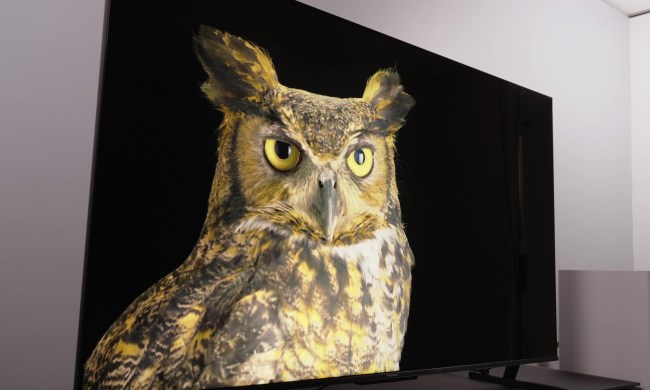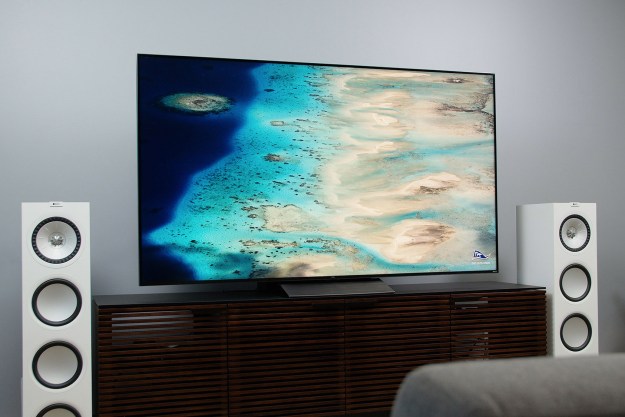
- Excellent picture quality
- Surprisingly good sound
- Improved Roku TV remote
- Easy setup
- Excellent for gaming
- Poor off-axis performance
Given how popular TCL’s 6-Series 4K TVs have become over the past few years, it might be easy to dismiss the company’s move to add an 8K model as a trend-based cash grab. Fortunately, that’s not at all the case. The new 8K version of TCL’s 6-Series (series model R648) packs significant upgrades in all the right places over the 4K-based R635 version, which I reviewed quite favorably.
That the R648 is the lowest-priced 2021 8K TV you can buy is just icing on the cake. Read on to learn why this is one of the best TVs you can buy this year, 8K or no 8K.
Video review
Out of the box

The TCL 8K 6-Series TV got well more than just an 8K resolution screen, and that was apparent upon first glance at its box. A colorful graphic shows the TV with a centralized, brushed metal stand as opposed to the independent pedestal feet we’ve seen installed on the far sides of previous TCL TV models. This is great news for anyone interested in a large TV screen size but short on media stand space.
The 75-inch 75R648 model I received for review was packed extremely well. While this made unboxing the TV a little more involved than I’m used to, the likelihood of the TV sustaining any damage in transit is extremely slim.
In the box with the TV, I found the aforementioned TV stand, screws to affix the stand to the TV, some product literature, two AAA batteries for the remote, and a completely redesigned Roku TV remote control.

Consider the R648’s audio system duly upgraded.
As I removed a protective plastic bag from the TV, I took note of another key design upgrade: The presence of a subwoofer driver on the back of the TV. The subwoofer is glossy, black, exposed (not covered by a plastic grill) and has a flat face rather than a traditional conical shape.
Seeing the subwoofer up top, I couldn’t help but look beyond the plastic grill grates lining the underside of the TV while installing the stand (which took four screws, a screwdriver, and all of about 30 seconds of my time). To my surprise, TCL has outfitted the R648 with independent tweeters to go along with two oval, down-firing midrange drivers.
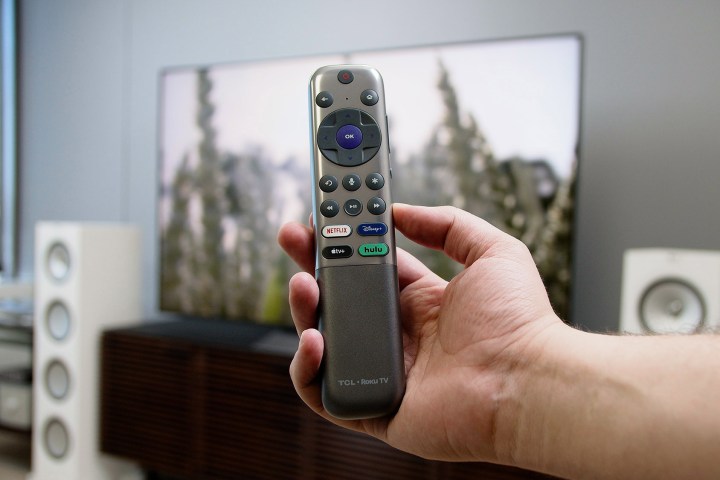
It’s rare enough to see an independent subwoofer on a TV, but one which has stereo tweeters and midrange drivers is virtually unheard of. Consider the R648’s audio system duly upgraded.
With the TV in place and plugged in, I clicked the power button on the remote and settled in for what I expected to be a 20-minute setup routine.
TCL 8K 6-Series (R648) TV details
While we reviewed the 75-inch 75R648 model, our review also applies to the 65-inch model.
| Screen Size | Model Number | MSRP |
| 65-inch | 65R648 | $2,200 |
| 75-inch | 75R648 | $3,000 |
Setup
I’ve complained at length in past TCL TV reviews about how getting the TVs’
Once the 75R648 was powered up and connected to the internet, it set about running its own
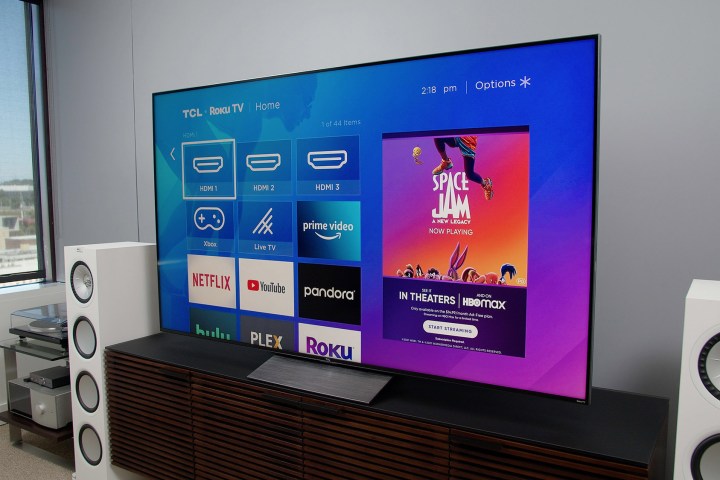
What really pleased me, however, was how quickly I was able to get my preferred picture settings applied across multiple
This is a good start, but I expected to have to repeat this process again for high dynamic range (
But the R648 series figured out what I was up to and had already selected the appropriate
At any rate, it should be noted that, for as complicated as TV setup can be for those of us who enjoy peaking and tweaking our picture settings, the R648 made the process a relative breeze.
Specs and measurements
Right out of the box, I knew this TV was something special. I review enough TVs that I can just tell before I start breaking out the measurement gear or making any calibration adjustments. The
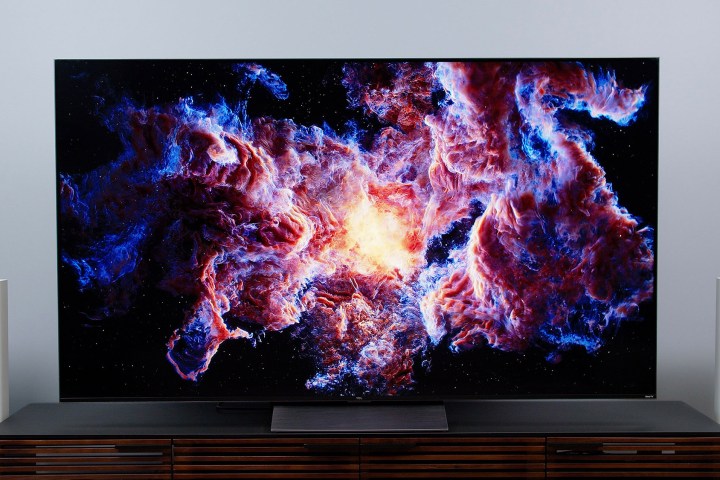
Confusingly, though, a glance at TCL R648’s spec sheet has the TV looking a lot like the
Using a C6 colorimeter profiled to an xRite I1Pro and Calman software, I measured the R648’s peak brightness performance in the Movie picture mode with the backlight setting at Normal, Bright, and Brighter. Here’s what I got.
In Normal, I measured 256 nits in SDR and 910 nits in
For those that care about backlight zone count: The R648 offers 240 zones in the 75-inch model and 160 zones in the 65-inch model.
Picture quality

It’s clear that even though TCL is using the same backlighting hardware, the R648 has been tuned for higher performance. The peak brightness measurements I took are significantly better than those I measured from the R635. However, the improvements aren’t limited to higher brightness.
I observed the R648 handling dark areas of the screen much better than the R635 did as well, offering deeper blacks, even around bright objects on dark backgrounds — a tough trick to pull off with higher brightness readings across the board.
The higher contrast performance afforded by that combo extended into color performance as well, yielding better-saturated colors at higher brightness levels than I saw with the
Upscaling seemed to be handled with the same prowess as well, though the job of upscaling 720p and 1080p content all the way up to 8K is clearly more challenging than it is to upscale it to
I thoroughly enjoyed watching this TV every second I sat in front of it.
Upscaling of high-quality
The R648’s Achilles heel is its off-axis performance. Typically, TVs that use a VA-type LCD panel struggle with maintaining contrast and color saturation as you move off to the sides or well above/below the TV. While the R648’s vertical axis performance is fine, its horizontal axis performance is restricted to a very narrow window, and its off-axis performance is bordering on deplorable. If you have a wide viewing area and folks frequently sit well off to the side of the TV, they will not be getting the same stellar picture quality those sitting directly in front of the screen enjoy.
Getting away from all the strict performance analysis, I can say this about the TCL R648: I thoroughly enjoyed watching this TV every second I sat in front of it. As a big fan of OLED TVs and their perfect black levels and complete lack of backlight anomalies, I was surprised at how well the R648 was able to captivate me without triggering my over-heightened sense of backlight awareness and milky black levels. Is the R648 a substitute for OLED in a setting with controlled lighting? No, not in terms of contrast and color. But in a brighter room, it will offer significantly better performance than most OLEDs on the market, save perhaps the Sony A90J or LG G1 OLED TVs.
Sound quality

The R648 has a beefy sound system that only adds value to the television. The included subwoofer offers solid bass and a room-filling presence offered by few contemporary TVs. Dialog intelligibility is excellent while stereo effects are present if not entirely convincing. My only complaint is that the tweeters seem to have been pumped up a bit, providing some harshness in the treble that I could do without. Admittedly, this harshness was more noticeable when listening to music than it was when watching TV shows or movies.
Gaming
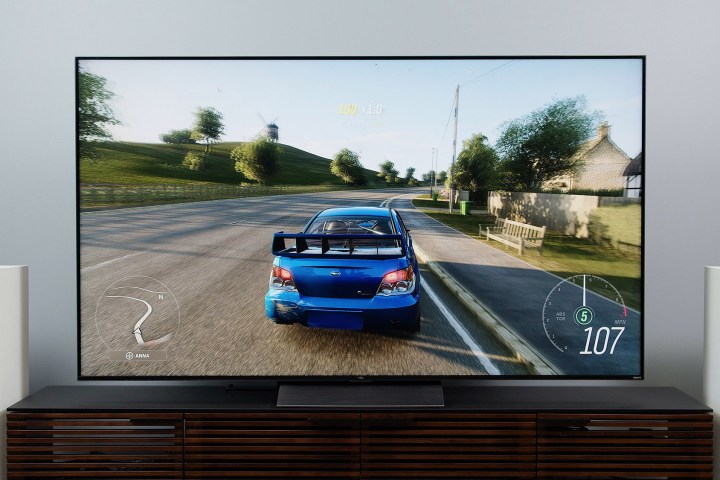
If it wasn’t clear by now that the R648 offers far more than just an 8K screen, let me add this little tidbit on top: The R648 offers two
Using an Xbox Series X dashboard, I was able to confirm that the R648 can deliver 4K120/Hz and 8K/60Hz gaming with a variable refresh rate (VRR), auto low latency mode (ALLM), and
Pair those picture performance aspects with the respectably low input lag and image enhancements provided by THX Game Mode, and you have one of the best gaming TVs you can purchase. That the eARC port remains free to serve those that have an elaborate home theater system without restricting one of those
Our take
The TCL R648 is an outstanding TV and very deserving of flagship status among TCL’s product lineup. Its high brightness, solid black levels, very good out-of-box color performance, smooth motion, and excellent gaming chops make it one of the best TVs you can buy this year. The 8K resolution? That’s a bonus. Like most TV manufacturers, TCL is reserving its
Is there a better alternative?
Not at this price. Samsung’s 8K Neo QLED TVs and LG 8K QNED TVs may offer similar performance in some aspects but at a significantly higher price. With the R648 punching well above its price point, it makes the most sense for anyone looking to purchase a high-end TV, 8K resolution, or no.
How long will it last?
With its two
Warranty
TCL offers a one-year parts and labor warranty for the R648. You can navigate to TCL’s registration and warranty information here.
Should you buy it?
Yes. The TCL R648 offers tremendous value with excellent performance paired with a competitive price. While the 8K resolution isn’t really what makes this TV stand out, it does offer a certain element of future-proofing. You’ll pay a premium for this TV but get every cent back in performance.


